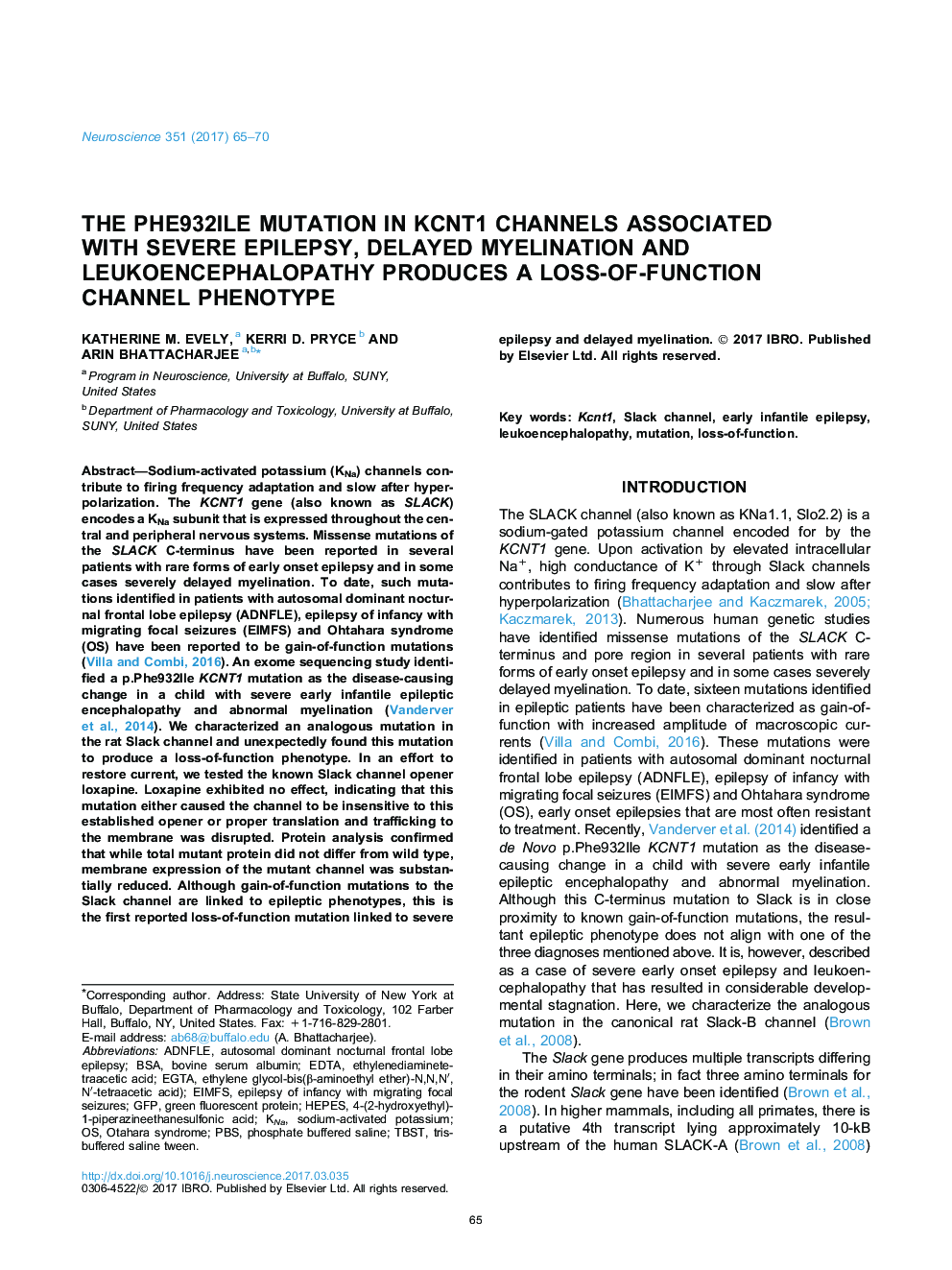| Article ID | Journal | Published Year | Pages | File Type |
|---|---|---|---|---|
| 5737898 | Neuroscience | 2017 | 6 Pages |
Abstract
Sodium-activated potassium (KNa) channels contribute to firing frequency adaptation and slow after hyperpolarization. The KCNT1 gene (also known as SLACK) encodes a KNa subunit that is expressed throughout the central and peripheral nervous systems. Missense mutations of the SLACK C-terminus have been reported in several patients with rare forms of early onset epilepsy and in some cases severely delayed myelination. To date, such mutations identified in patients with autosomal dominant nocturnal frontal lobe epilepsy (ADNFLE), epilepsy of infancy with migrating focal seizures (EIMFS) and Ohtahara syndrome (OS) have been reported to be gain-of-function mutations (Villa and Combi, 2016). An exome sequencing study identified a p.Phe932Ile KCNT1 mutation as the disease-causing change in a child with severe early infantile epileptic encephalopathy and abnormal myelination (Vanderver et al., 2014). We characterized an analogous mutation in the rat Slack channel and unexpectedly found this mutation to produce a loss-of-function phenotype. In an effort to restore current, we tested the known Slack channel opener loxapine. Loxapine exhibited no effect, indicating that this mutation either caused the channel to be insensitive to this established opener or proper translation and trafficking to the membrane was disrupted. Protein analysis confirmed that while total mutant protein did not differ from wild type, membrane expression of the mutant channel was substantially reduced. Although gain-of-function mutations to the Slack channel are linked to epileptic phenotypes, this is the first reported loss-of-function mutation linked to severe epilepsy and delayed myelination.
Keywords
EGTAtris-buffered saline tweenADNFLEKNaKCNT1TBSTPBSGFPHEPES4-(2-hydroxyethyl)-1-piperazineethanesulfonic acidBSAbovine serum albuminEDTAEthylenediaminetetraacetic acidLoss-of-functionmutationAutosomal dominant nocturnal frontal lobe epilepsyPhosphate buffered salineLeukoencephalopathygreen fluorescent protein
Related Topics
Life Sciences
Neuroscience
Neuroscience (General)
Authors
Katherine M. Evely, Kerri D. Pryce, Arin Bhattacharjee,
